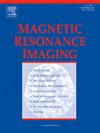脑肿瘤定量DCE-MRI中大血管分割:Swin UNETR方法。
IF 2
4区 医学
Q2 RADIOLOGY, NUCLEAR MEDICINE & MEDICAL IMAGING
引用次数: 0
摘要
脑肿瘤的生长与血管生成有关,其中新生血管的密度表明肿瘤的进展并与肿瘤的分级相关。定量动态对比增强磁共振成像(DCE-MRI)在脑肿瘤分级和治疗反应评估中显示出潜力。大血管的分割是使用定量DCE-MRI自动准确分级肿瘤的关键。传统的基于规则的人工和半人工大血管分割方法耗时长,且容易出错。本研究提出了一种新的基于深度学习的大血管自动分割技术,使用Swin UNETR架构,并将其与U-Net和Attention U-Net架构进行比较。该研究使用了187名脑肿瘤患者的MRI数据,训练、验证和测试数据集来自两个中心、两个供应商和两个磁场强度磁共振扫描仪。为了验证所建立模型的普遍性,我们还对不同类型的脑肿瘤进行了测试,包括淋巴瘤和转移瘤。性能评估表明,Swin UNETR在大血管区域分割方面优于其他模型(在训练集和验证集上的Dice得分分别为0.979和0.973,测试集性能在0.835 ~ 0.982之间)。多数定量参数差异有统计学意义(p 0.05)。该方法在提高肿瘤自动分级的准确性和治疗计划方面具有潜在的应用价值。本文章由计算机程序翻译,如有差异,请以英文原文为准。
Large blood vessel segmentation in quantitative DCE-MRI of brain tumors: A Swin UNETR approach
Brain tumor growth is associated with angiogenesis, wherein the density of newly developed blood vessels indicates tumor progression and correlates with the tumor grade. Quantitative dynamic contrast enhanced-magnetic resonance imaging (DCE-MRI) has shown potential in brain tumor grading and treatment response assessment. Segmentation of large-blood-vessels is crucial for automatic and accurate tumor grading using quantitative DCE-MRI. Traditional manual and semi-manual rule-based large-blood-vessel segmentation methods are time-intensive and prone to errors. This study proposes a novel deep learning-based technique for automatic large-blood-vessel segmentation using Swin UNETR architectures and comparing it with U-Net and Attention U-Net architectures. The study employed MRI data from 187 brain tumor patients, with training, validation, and testing datasets sourced from two centers, two vendors, and two field-strength magnetic resonance scanners. To test the generalizability of the developed model, testing was also carried out on different brain tumor types, including lymphoma and metastasis. Performance evaluation demonstrated that Swin UNETR outperformed other models in segmenting large-blood-vessel regions (achieving Dice scores of 0.979, and 0.973 on training and validation sets, respectively, with test set performance ranging from 0.835 to 0.982). Moreover, most quantitative parameters showed significant differences (p < 0.05) between with and without large-blood-vessel. After large-blood-vessel removal, using both ground truth and predicted masks, the values of parameters in non-vascular tumoral regions were statistically similar (p > 0.05). The proposed approach has potential applications in improving the accuracy of automatic grading of tumors as well as in treatment planning.
求助全文
通过发布文献求助,成功后即可免费获取论文全文。
去求助
来源期刊

Magnetic resonance imaging
医学-核医学
CiteScore
4.70
自引率
4.00%
发文量
194
审稿时长
83 days
期刊介绍:
Magnetic Resonance Imaging (MRI) is the first international multidisciplinary journal encompassing physical, life, and clinical science investigations as they relate to the development and use of magnetic resonance imaging. MRI is dedicated to both basic research, technological innovation and applications, providing a single forum for communication among radiologists, physicists, chemists, biochemists, biologists, engineers, internists, pathologists, physiologists, computer scientists, and mathematicians.
 求助内容:
求助内容: 应助结果提醒方式:
应助结果提醒方式:


